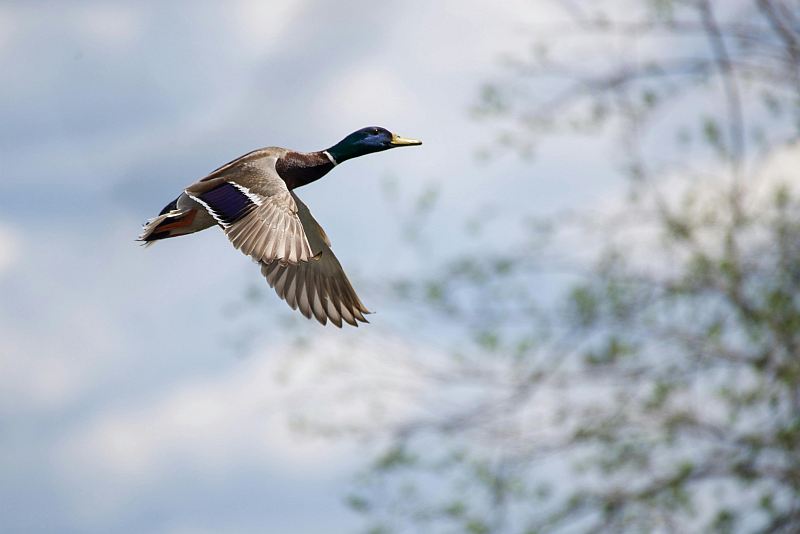Like a detective piecing together a complex puzzle, you’re likely trying to understand the enigmatic world of domesticated ducks, particularly their ability to fly.
It’s common knowledge that wild ducks take to the skies with grace and ease, but what about their domesticated counterparts? Are they equally gifted in flight, or has domestication clipped their wings, so to speak?
So, can domesticated ducks fly? The answer may not be as straightforward as you’d assume. Many factors including breed, weight, and environment come into play.
The question then becomes – under what circumstances can domesticated ducks truly take flight? Let’s explore this intriguing topic further.
Understanding Domesticated Ducks
To truly grasp the nuances of domesticated ducks’ ability to fly, you must delve into their unique physiological and behavioral attributes that distinguish them from their wild counterparts.
Duck behavior is heavily influenced by their environment. Domestication generally involves selective breeding, often reducing a duck’s instinct and capability to fly. They’re usually heavier, making lift-off challenging. Plus, they’re typically less fearful of predators, which would be a primary reason for flight in the wild.
Furthermore, duck nutrition plays a crucial role. A balanced diet is essential for maintaining the feather health and muscle strength necessary for flight. However, domestic ducks often lack this, living on a diet that’s high in bread and low in protein and vegetables. Therefore, their ability to fly can be greatly compromised.
Physical Attributes Influencing Flight
When considering a duck’s ability to fly, you must take into account their physical attributes, particularly their weight and wing structure.
Weight significantly impacts flight mechanics. Heavier ducks struggle to achieve the necessary lift for sustained flight. Conversely, lighter ones can take off and maintain altitude with relative ease.
Now, let’s talk about wing structure. Duck aerodynamics rely heavily on the size and shape of their wings. Ducks with larger, stronger wings are more likely to achieve flight. They possess the power to propel themselves into the air and to navigate effectively.
Ducks with smaller or less muscular wings often find flight more challenging.
Comparing Wild and Domesticated Ducks
In comparing wild and domesticated ducks, you’ll find significant differences in their flight capabilities due to their varied physical attributes and living conditions. Wild ducks often migrate, which requires a high-energy diet and a robust physique. In contrast, domesticated ducks don’t typically migrate, and their diet, often less rich in nutrients, doesn’t support long-distance flight.
Here’s a snapshot to better understand the differences:
| Aspect | Wild Ducks | Domesticated Ducks |
|---|---|---|
| Migration | Common | Rare |
| Diet | High-energy | Low-energy |
| Physical Capability | Built for long flights | Not typically designed for long flights |
These factors play a significant role in the contrasting flight capabilities of wild and domesticated ducks. Remember, the environment and lifestyle greatly influence the duck’s ability to fly.
Factors Affecting a Duck’s Ability to Fly
Before you assume all ducks can fly, you must consider various factors.
Firstly, a duck’s physical condition – such as its weight and wing structure – plays a significant role in its flight capabilities.
Secondly, the environment, including aspects like available space and weather conditions, can greatly influence a duck’s ability to take to the skies.
Duck’s Physical Conditions
Based on several factors, a duck’s physical condition can significantly influence its capacity to fly.
A duck’s diet is paramount to its flight ability. It’s vital that they consume a balanced diet, rich in nutrients and proteins for energy and muscle development. Malnourishment can lead to stunted growth and weak flight muscles, hindering their ability to take off and sustain flight.
Disease prevalence can also play a significant role. Diseases such as duck virus enteritis and avian influenza can cause severe damage to a duck’s respiratory and nervous systems, impairing its flight capabilities.
Therefore, ensuring a disease-free environment and maintaining a nutritious diet are critical for a duck’s flight ability. Regular veterinary check-ups can help detect any health issues early, thus preventing potential flight-related problems.
Environmental Impact on Ducks
Several environmental factors can directly affect a duck’s ability to fly. These factors include the habitat’s climate, human interaction, and the availability of resources.
The climate within duck habitats can influence ducks’ feeding patterns, impacting their energy levels and, consequently, their flight capabilities. For example, colder climates can limit food availability, leading to malnutrition and decreased flight ability.
Human interaction also plays a significant role in a duck’s ability to fly. Overfeeding by humans can lead to obesity, hampering a duck’s capacity to fly. Additionally, human encroachment on their habitat can cause stress, inhibiting flight.
Lastly, resource availability, especially food and water, affects a duck’s health and energy levels, directly impacting their flight.
Common Misconceptions About Duck Flight
It’s a common belief that domesticated ducks can’t fly, a misconception that needs thorough debunking. Flight myths circulate, painting a picture of these birds as grounded creatures. However, detailed research into duck behavior proves otherwise.
Most domesticated ducks retain the ability to fly, especially when they’re lighter breeds. On the other hand, heavier breeds may struggle due to their size but aren’t entirely flightless.
Another myth suggests that domesticated ducks lose flight due to a lack of practice. This isn’t entirely accurate either. Ducks, like many birds, possess an instinctual drive to fly. So, if given ample space and opportunity, they’ll take flight.
Understand that misinformation can lead to inadequate care. So, remember, domesticated ducks can and do fly.
Practical Implications for Duck Owners
Understanding the flight capabilities of your domesticated ducks has direct implications for their housing and care. If they’re flight-capable, you’ll need secure, high enclosures to prevent escape. Even flightless breeds require spacious housing for comfort and health.
Duck nutrition is another crucial aspect. Proper nutrition enhances their health and, in flying breeds, supports optimal flight muscle development. A balanced diet, rich in grains, vegetables, and appropriate supplements, is vital.
Remember, clean, fresh water – ducks need it for digestion and hygiene.
Frequently Asked Questions
What Are the Differences in Diet Between Domesticated and Wild Ducks?
Due to duck domestication history, domesticated duck breeds typically eat commercial feed, while wild ducks forage for natural food like insects, seeds, and aquatic plants. They’ve different diets due to their different lifestyles.
How Long Does It Take for Domesticated Ducks to Fully Mature?
You’re curious about domesticated ducks’ maturation, aren’t you? Typically, they reach full maturity between 17 to 28 weeks. Look for maturity indicators like breeding patterns; they’re key in determining if your duck has fully matured.
Can Domesticated Ducks Be Trained to Perform Tasks?
Yes, you can train domesticated ducks to perform tasks. Duck communication and training methods, including positive reinforcement, are key. With patience and consistency, you’ll find ducks are quite intelligent and capable of learning.
What Are the Typical Behaviors of Domesticated Ducks Compared to Wild Ducks?
You’ll find that domesticated ducks exhibit different behaviors than wild ducks, especially in duck communication and breeding patterns. They’re generally more social, less aggressive, and have more predictable breeding habits.
Are Domesticated Ducks Prone to Certain Diseases Compared to Wild Ducks?
Yes, domesticated ducks are more prone to certain diseases compared to wild ducks. Disease prevention strategies and regular veterinary care are vital. They’re often exposed to different environments and diets, which can affect their health.
Conclusion
So, can your feathered friends take to the skies? Well, it’s not as clear-cut as ‘water off a duck’s back.’ While some domesticated ducks can indeed fly, factors like breed, size, and health play a significant role.
Let’s not forget, domestication has greatly influenced their flight capabilities compared to their wild counterparts. In essence, it’s safe to say, owning a domesticated duck doesn’t necessarily mean you’ll be spending your time ducking from low-flying quackers.

